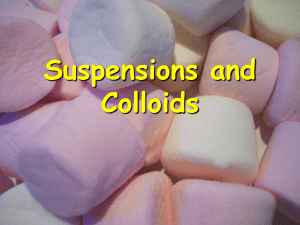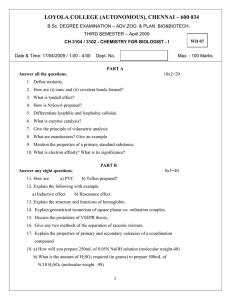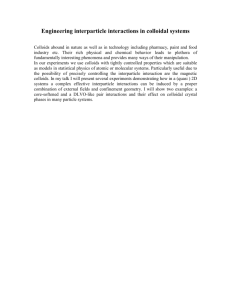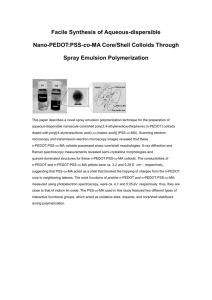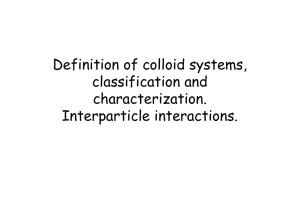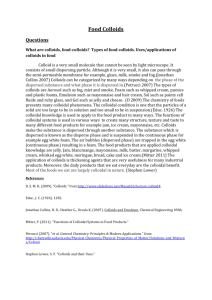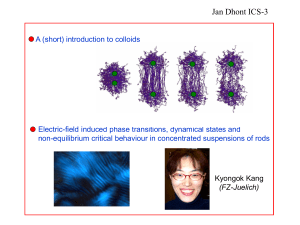Non-Equilibrium Processes and Self
advertisement
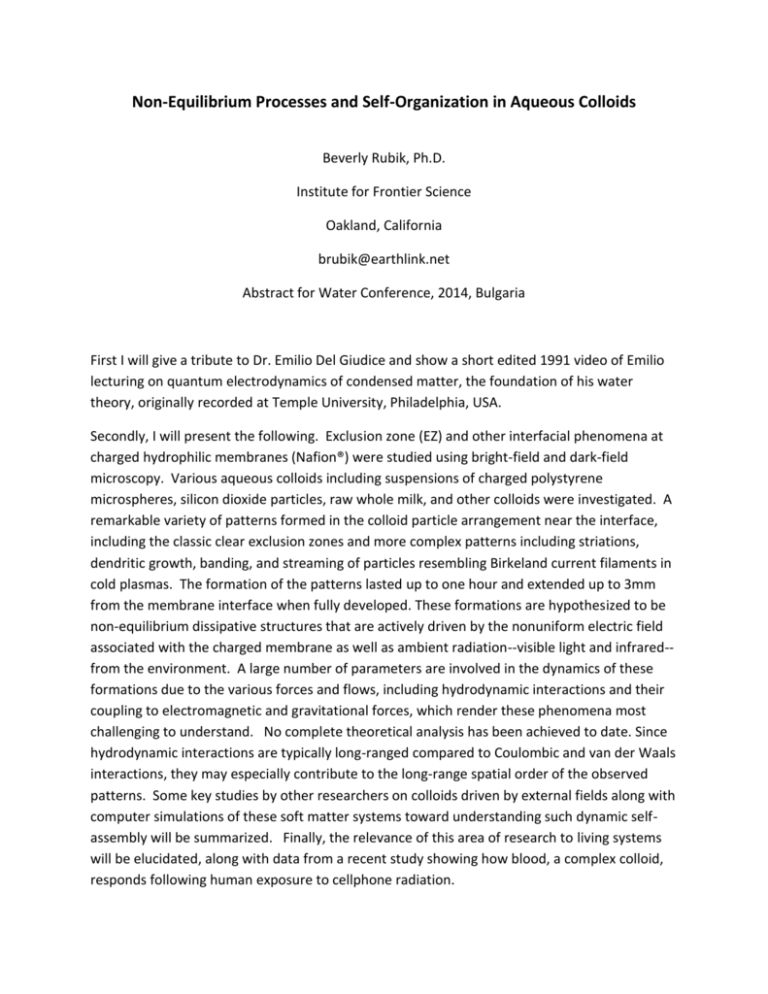
Non-Equilibrium Processes and Self-Organization in Aqueous Colloids Beverly Rubik, Ph.D. Institute for Frontier Science Oakland, California brubik@earthlink.net Abstract for Water Conference, 2014, Bulgaria First I will give a tribute to Dr. Emilio Del Giudice and show a short edited 1991 video of Emilio lecturing on quantum electrodynamics of condensed matter, the foundation of his water theory, originally recorded at Temple University, Philadelphia, USA. Secondly, I will present the following. Exclusion zone (EZ) and other interfacial phenomena at charged hydrophilic membranes (Nafion®) were studied using bright-field and dark-field microscopy. Various aqueous colloids including suspensions of charged polystyrene microspheres, silicon dioxide particles, raw whole milk, and other colloids were investigated. A remarkable variety of patterns formed in the colloid particle arrangement near the interface, including the classic clear exclusion zones and more complex patterns including striations, dendritic growth, banding, and streaming of particles resembling Birkeland current filaments in cold plasmas. The formation of the patterns lasted up to one hour and extended up to 3mm from the membrane interface when fully developed. These formations are hypothesized to be non-equilibrium dissipative structures that are actively driven by the nonuniform electric field associated with the charged membrane as well as ambient radiation--visible light and infrared-from the environment. A large number of parameters are involved in the dynamics of these formations due to the various forces and flows, including hydrodynamic interactions and their coupling to electromagnetic and gravitational forces, which render these phenomena most challenging to understand. No complete theoretical analysis has been achieved to date. Since hydrodynamic interactions are typically long-ranged compared to Coulombic and van der Waals interactions, they may especially contribute to the long-range spatial order of the observed patterns. Some key studies by other researchers on colloids driven by external fields along with computer simulations of these soft matter systems toward understanding such dynamic selfassembly will be summarized. Finally, the relevance of this area of research to living systems will be elucidated, along with data from a recent study showing how blood, a complex colloid, responds following human exposure to cellphone radiation.
